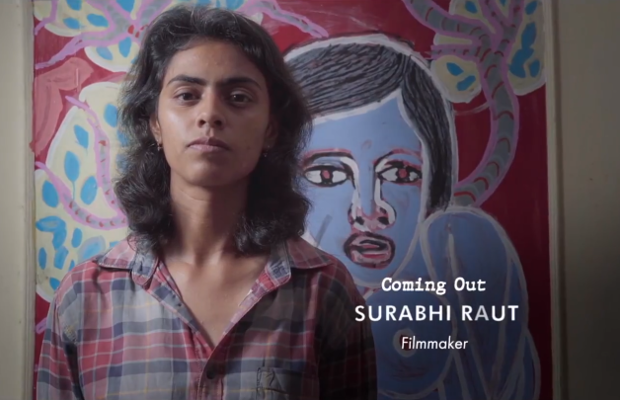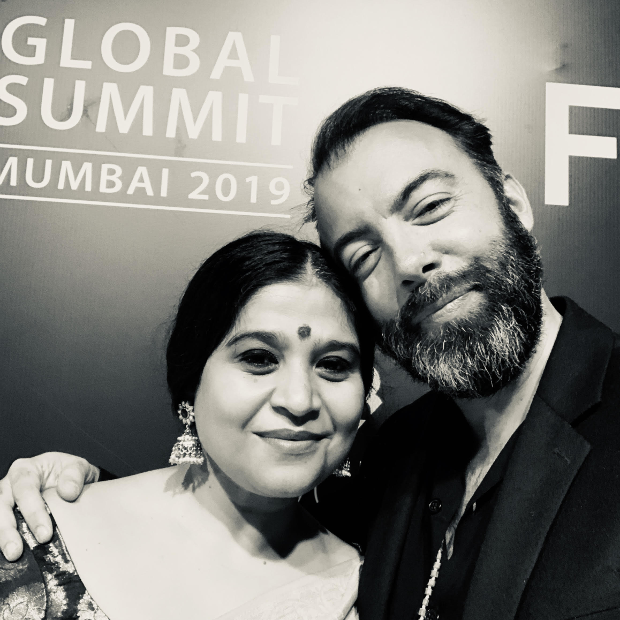
Why FCB and the Times of India Came Out to Support LGBTQ Readers

Six months after India decriminalised homosexuality, the Times of India has used its clout to back the LGBTQ community with a new project that turns the classifieds section of the paper into a platform who, until recently, have had to remain hidden.
Launching on May 17th, the International Day Against Homophobia, ‘Times Out&Proud’ creates space in the classifieds for LGBTQ people to share their stories and celebrations in a way that has long been denied to them. Discrimination against LGBTQ people has – and still is – so profound that the simple act of announcing an anniversary in a newspaper or openly seeking a same sex partner in the classifieds would be seen as transgressive or taboo. That’s why creative agency FCB Ulka decided to turn the section into a safe and celebratory space.
“Classifieds have always been a strong feature in newspapers to connect with readers. And the idea of offering free classifieds to help members of the LGBTQ community get a platform became an ideal starting point for this campaign,” says Swati Bhattacharya, chief creative officer of FCB India.
The decision to back LGBTQ people with a creative campaign makes total sense for the Times of India as a brand and is congruent with their editorial approach, explains Swati. And, what’s more, its readership is highly influential, ensuring that the right creative approach could have a real impact with thought leaders.
“Times of India has always been sympathetic to the cause of the LGBTQ community. And innumerable editorial pieces over time have attempted to draw the attention of readers to these issues. They always had a place in their hearts but now there is physical space for the community,” says Swati. “Our readers are the most influential members of society in India. And we have always felt that if an issue has to be raised and popularised in the mainstream, TOI is a great place to start. This was one such issue.”
Indeed, at a time where the topic of purpose-driven advertising and creative is being debated and can be sneered at cynically, the work done by the Times of India and FCB is rather unique. After all, a newspaper is a purpose-driven product, enmeshed in society, politics, culture and democracy. According to Swati, engaging in such topics is a responsibility for TOI.
“As the leading newspaper of the country we have a larger onus on our shoulders than merely being a chronicler of events. A newspaper is a voice for all sections of society. There will always be difference of opinions but that cannot deter us from raising our voice for one section that we feel is being neglected,” says Swati. “The idea is not to create confrontation but to create convergence of opinions, beliefs and emotions.”
The project is not the first time that FCB and TOI have collaborated to give a voice to those discriminated against. Two years ago ‘Shindoor Khela: No conditions apply’ sought to include widows, single and trans women in a celebration of womanhood long confined to married women only. This project led to more conversations with excluded groups and got the teams at TOI and FCB thinking about other ways they could support and include excluded groups.
Fred Levron is worldwide creative partner at FCB Global and he sees Out&Proud as an evolution of TOI’s purpose. ‘Sindoor Khela: No conditions apply’ started a purposeful brand mission for the Times Of India. Igniting and accelerating change in Indian society.
“Out&Proud is another expression of this commitment. The particularity here is the execution is not a classic form of advertising, it’s a platform. A stage for the entire community across India to speak up. To finally declare their love, their identity to the world,” he says. “From now on millions of LGBTQ members know they have a tribune they can use, a microphone to make their voice heard.”

Swati and Fred
The plan is to launch the free Out&Proud classifieds for three months to see what sort of engagement they get and as responses and reactions emerge, the team will decide where to take the idea next, whether to install it as a permanent feature or to evolve the execution further.
Fred has high hopes for Out&Proud, when asked how long he thinks it will last. “How long? As long as people will look for love, declare their love, feel the need to share with the world who they are and who they want to be: it will hopefully run forever!” he says, deeply impassioned. “This is not about trying to create noise and run to the next thing here. As we considered this initiative the Times of India changed their editorial approach to accelerate a social change. They created a permanent space for a community of millions to be seen.”
Over the past few months we’ve seen a trickle of brands use their advertising platforms to normalise LGBTQ lifestyles and relationships. It’s by no means an almighty torrent – and despite the change in legal status many mainstream advertisers are reluctant to engage in a topic they view as divisive.
Swati hopes that the slow start represents the beginning of an accelerating momentum. “There are several courageous brands that are attempting to address the issues. But they are few and far between and the steps taken are tentative,” she says. “As the momentum grows, we do hope it may become far more normal to address alternate sexualities in marketing communication. And the day will come when the mainstream will consider brands that embrace such issues to be more progressive, more contemporary and more trustworthy.”
As for Fred, he sees the campaign in the global context and the broader conversation of brands backing a purpose and, to borrow from Ghandi, being the change they want to see in the world. Given that the law change is still relatively recent and the residual controversies and divisions within the country, there is still just a small handful of brands willing to include LGBTQ representation and acceptance into their communications. That’s what he thinks makes this project just so important.
“The fact that it is so fresh and still so controversial tells you how important it is for the Times of India. It’s hard to believe that only six months ago, you would have gone to jail for loving the wrong person, for being who you wanted to be,” he reflects. “Reality is, it’s going to take quite some time to go from a legal change to a social change. There are very few brands in India and around the world who believes enough in something that they would take the risk to go against some of their potential customers. What the Times Of India does with Out&Proud creates an echo to other initiatives around the world like the ‘Believe In Something’ campaign from Nike in the US. I believe both brands are on the right side of history and incarnate an important change.”
The journey to acceptance will be long and slow and will require the involvement of more than one or two brands. There are yet many obstacles to overcome, particularly where people have had to hide their love and an important part of their identity for so long.
“Advertising is a powerful tool in the hands of marketers. And sensitive creativity goes a long way in helping people think more from the heart,” says Swati. “The challenges are immense. We have not even begun to scratch the surface. But it all starts with acceptance. The mainstream has to accept and embrace the marginalised. The mainstream has to emotionally connect with the marginalised. The mainstream has to realise that despite differences in orientation, the human issues are exactly the same. And they translate into civic issues, medical issues, financial empowerment issues and so on. The journey is long and arduous but we hope we have made a good beginning.”
Ultimately the campaign reaffirms the ad industry’s potential to have a meaningful social and cultural impact. It’s easy to be cynical, particularly at a time when, internationally, the advertising industry seems to have lost faith in itself and the power of creativity. But seeing a major local brand leverage its assets and influence in a creative and thoughtful way that ought to have an impact on real people’s lives is inspiring to see. If advertising, along with other facets of the media, can continue to allow silenced voices to share their stories then, perhaps, future generations will not face the same discrimination. “Advertising in India and all around the world plays a role of culture maker,” says Fred. “The great mission of advertising agencies across India will be to bring to the masses a social change that needs to transition from the exceptional to a new norm.”












